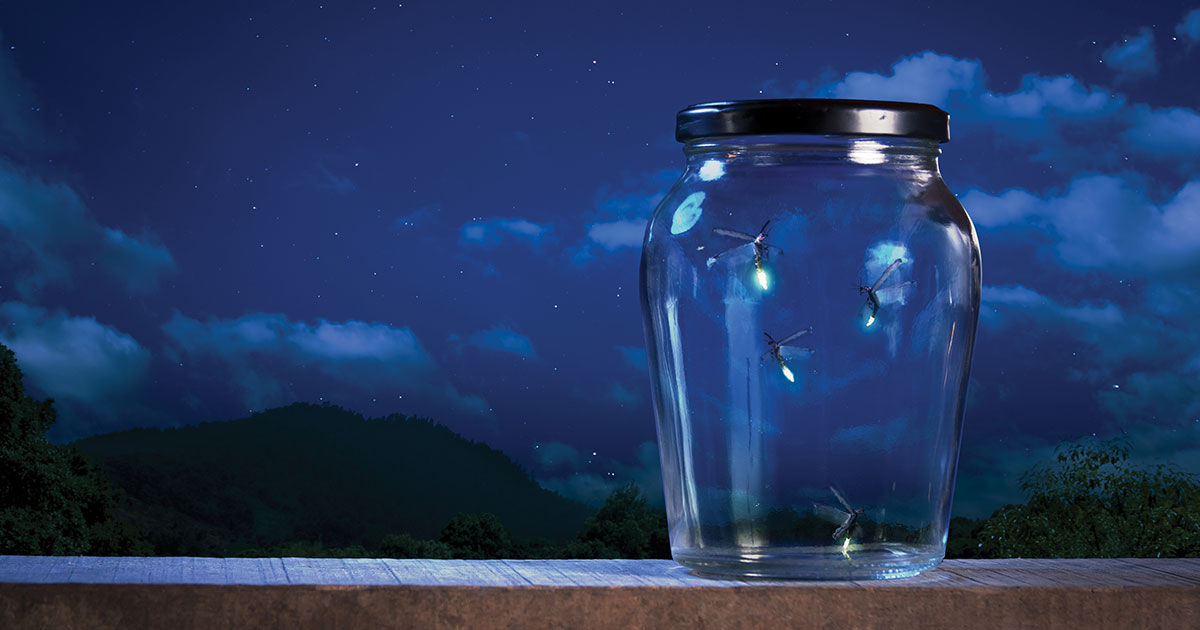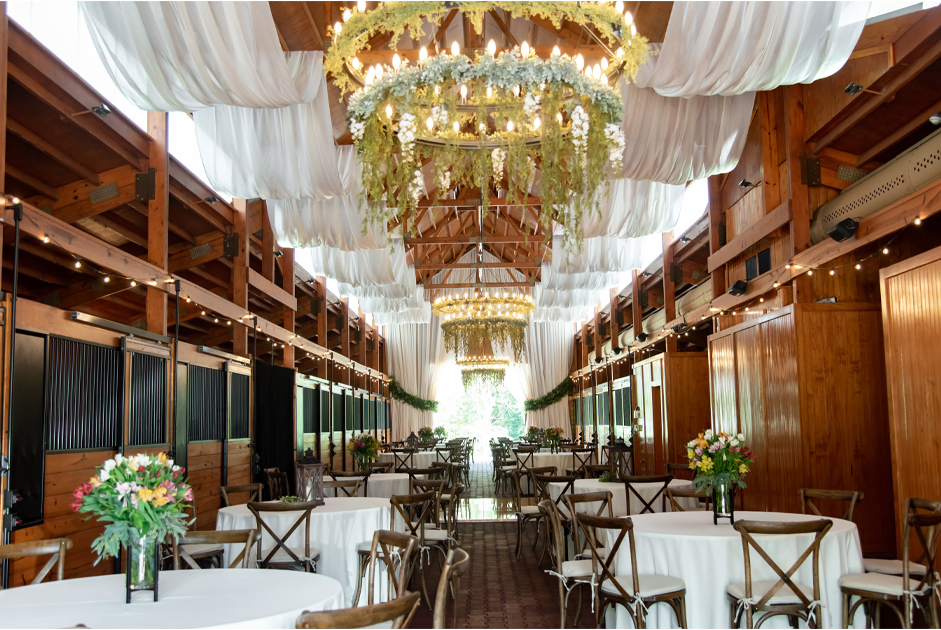A field of fireflies . . . Every late spring and summer, we marvel at the magical, bright flashes of light that streak across the summer night sky, like mini strobe lights or shooting stars that quickly catch your eye, then fade quietly from sight, before lighting up again!
LANGUAGE OF LIGHTS
Fireflies put on quite a light show, speaking the language of lights, as they attract their prey and mates, as well as ward off predators with flashes of light emitted from their organs, usually located in the lower abdomens.
BRILLIANT BIOLUMINESCENCE
This fascinating light production, known as bioluminescence, is a chemical reaction that occurs. When oxygen is available, the light organ lights up and when nitric oxide is present, oxygen can flow into the light organ where it combines with other chemicals.
SETTING THE STAGE IN OTHER CULTURES
The ancient Chinese believed these light-producing bugs were the product of burning grasses. They caught them and put them into transparent boxes that lit up, like lanterns. Catching lightning bugs was a popular summer pastime, as it has become for many American children.
Legend has it that the Japanese, who call fireflies “hotaru,” believed these flashy fliers to be spirits of fallen warriors who died in battle. They are also symbolic subjects of 8th century passionate love poetry, Man’you-shu.
In traditional Native American folklore is the Apache legend that sly Fox attempted to take fire from the firefly village, but his tail caught on fire with a piece of burning bark. He ran away from the firefly village and alerted Hawk, who scattered glowing embers all around the world as he flew. This is how fire was first introduced to the Apaches.
FEWER LIGHTNING BUGS
Unfortunately, the population of these magical bugs, a part of the beetle family, are decreasing and dwindling, mainly due to light pollution and over development.
However, you can make your environment a habitat and haven for these magical bugs that keep living and lighting up each night.
KEEP IT DARK OUTSIDE
Human light pollution can negatively affect fireflies, so make sure to do your part by keeping blinds closed inside your house at night and turning off your outside lights.
The benefit to you is that you’ll get to experience the true splendor of nature’s light show, catching an exciting glimpse of lights in the natural world. And, when outdoors, don’t forget to look up so you won’t miss the moon, stars and planets that light up the expansive sky.
HELPFUL HABITATS
Fireflies typically prefer long grasses and often hang out in the grass, so the less you have to mow the lawn, the better it is for providing a place for them to live. Pine trees and other conifers are an ideal environment for lightning bug larvae to find the prey they feed on, including insects, snails, slugs and earthworms. Once mature, pines can provide a beneficial shelter for fireflies where they can find a mate.
FIND FALLEN FOLIAGE AND FEATURE WATER
Let nature do its thing! No need to be too neat and tidy with fallen foliage. Leaving rotting logs and natural litter out can give larvae an ideal place to grow. They also thrive near water. So, find a place to create standing water or marshy areas, including ponds, streams, and rivers, where lightning bugs can congregate.
KEEP IT ALL NATURAL FOR NATURE’S SAKE
Make sure the fertilizers you use are as natural as possible, so these friendly flying bugs don’t ingest anything poisonous or toxic that could kill them. Also, keep in mind that spraying chemical-laden pesticides could affect more than just lightning bugs, extending on down the food chain, including the birds who eat them as well.
OTHER NAMES FOR FIREFLIES
A Firefly is also known as a Lightning Bug, Firefly Beetle, Glow Worm, Glow Fly, Moon Bug, Golden Sparkler and Fire Devil.
Go for it! Head outside and enjoy the magic of a warm spring or summer night. And, don’t miss out on nature’s beautiful light show. It’s like friendly fireworks this season – minus all the noise!


















